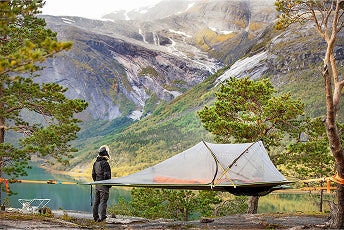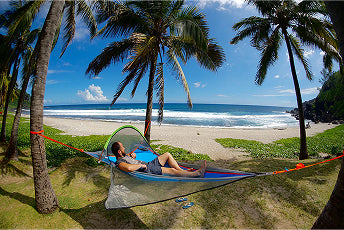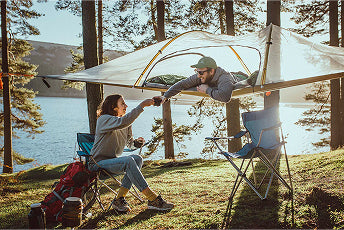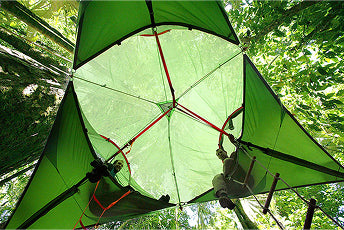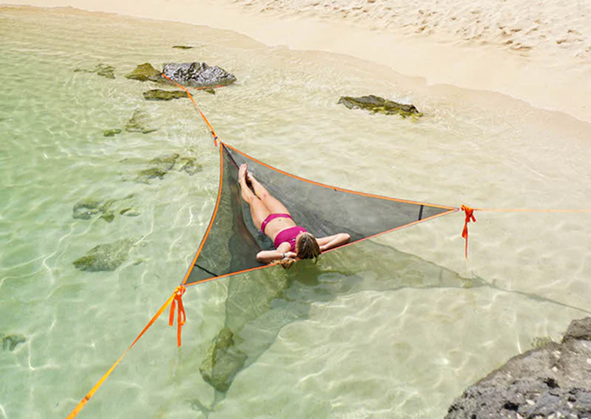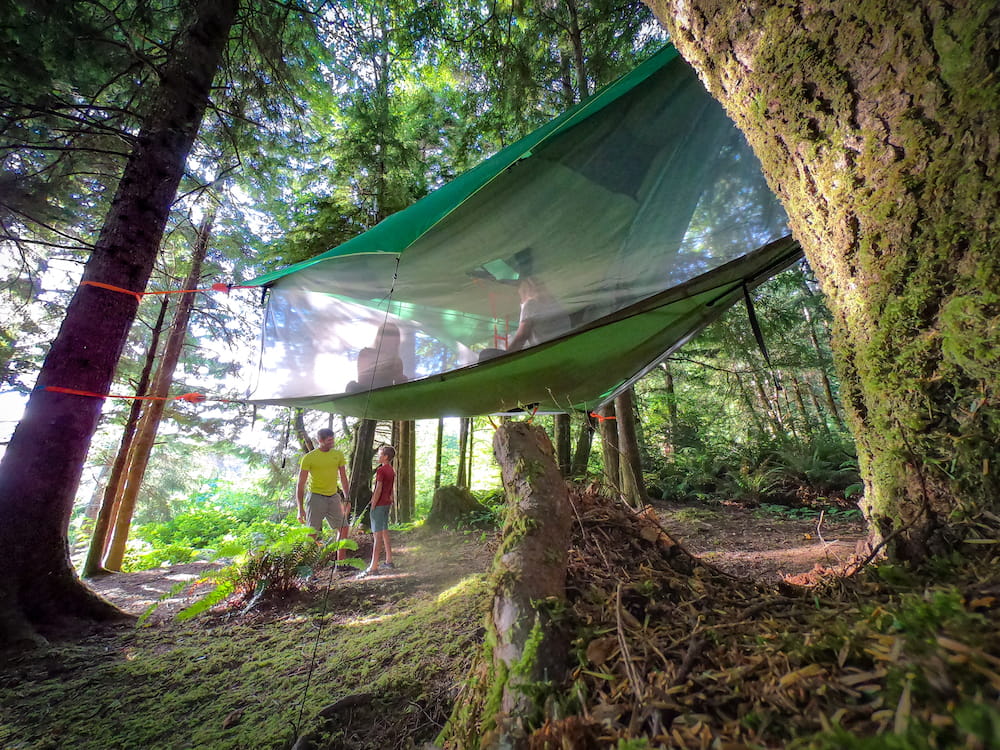A hammock tarp (or rainfly) is for campers who wish to lounge comfortably in the brilliance of the fresh, wilderness air...without being exposed to the uncomfortable aspects of the elements. Many trekkers wish to use their hammocks year-round—rain or shine. But not everyone is so adventurous, and when the weather conditions take a turn for the worse many folks will automatically want to bring out a heavy, conventional backpacking tent.
However, a simple solution to implementing year-round hammock camping is to keep a hammock tarp on hand. This way, there’s no need to travel with a conventional tent at all. Hammock tarps are surprisingly versatile and will create a reliable shelter for campers while they hang from the trees.
All Tentsile Tree Tents come with a rainfly and tent walls are also available for extra protection form the elements. The Trillium 3-person hammock can be converted into a full tree tent with rainfly by adding the Roof Kit.
Using a Hammock Tarp in the Summer

When summer creeps over the hills and through the woods, the hot days and warm nights mean its hunting time—for insects, that is. They may not be as effective as full-coverage insect nets, but hammock tarps can go a long way toward keeping the bugs & weather out while you’re staying cozy and warm inside. Probably the main use for a hammock tarp in the summer is to protect you from the beating sun on those long summer days. A tarp like this can be the difference between enjoying the hot weather or succumbing to the sun’s power, sunburns, and exhaustion. Plus, as we’ve mentioned, it will also provide a shelter-like resistance to biting bugs. But as you might imagine, hammock tarps become even more valuable during the rest of the year.
Using a Hammock Tarp in the Fall and Winter

These are the lesser talked about months when it comes to hammock camping. Why? It’s cold, rainy, and windy. What can a hammock tarp do to help? Well, foremost, hammock tarps provide the ultimate protection from the rain. In this respect, hammock tarps allow for comfortable, warm hammock camping without having to use a tree tent. And since we’re on the subject of warmth, hammock tarps really do help insulate and retain some extra warmth for campers. This helps make hammock camping a year-round option, and lets you comfortably sleep outdoors in the rain—something hammock campers usually avoid at all costs.
Finally, a hammock tarp can protect campers from the wind. Those who’ve slept through a windy night in the cold woods know that having proper wind protection matters a whole lot. Having reliable protection from wind gusts can mean the difference between sound sleep and a night of shivering and barely sleeping at all.
Advice for Buying a Hammock Tarp

When it comes to buying a hammock tarp, quality is key. Don’t buy one unless it’s waterproof. This is very important since, realistically, most people are buying these tarps to shelter from rain and snow. Many tarps are made from ripstop nylon fabric that’s lightweight, durable, and puncture-proof. Also, we recommend that you find a tarp with plenty of centerlines and tie-down options for greater setup flexibility.
In general, most tarps are easy to put up and carry around in a hiking backpack. They definitely shouldn’t add significant weight to your already-heavy load. A final word of advice is to always set up your tarp right away after putting up the hammock. This becomes especially important if rain or snow is expected in the forecast. You definitely don’t want to end up with a wet hammock as you frantically try to set up your tarp, while the rain is coming down! So, for your next adventure, stay one step ahead of the weather—and you’ll have a lot more fun hammock camping when you can stay dry every night with a hammock tarp!

